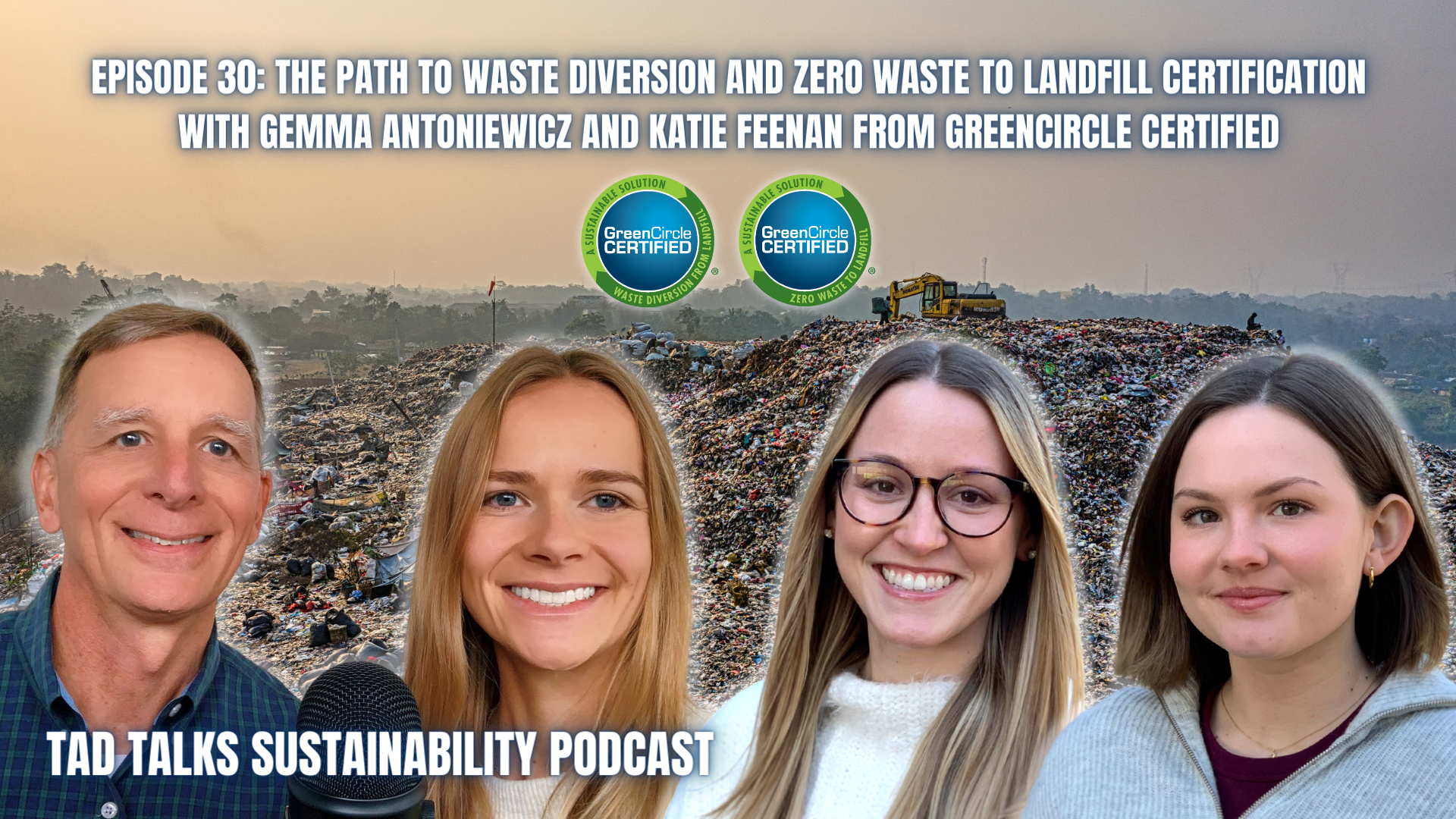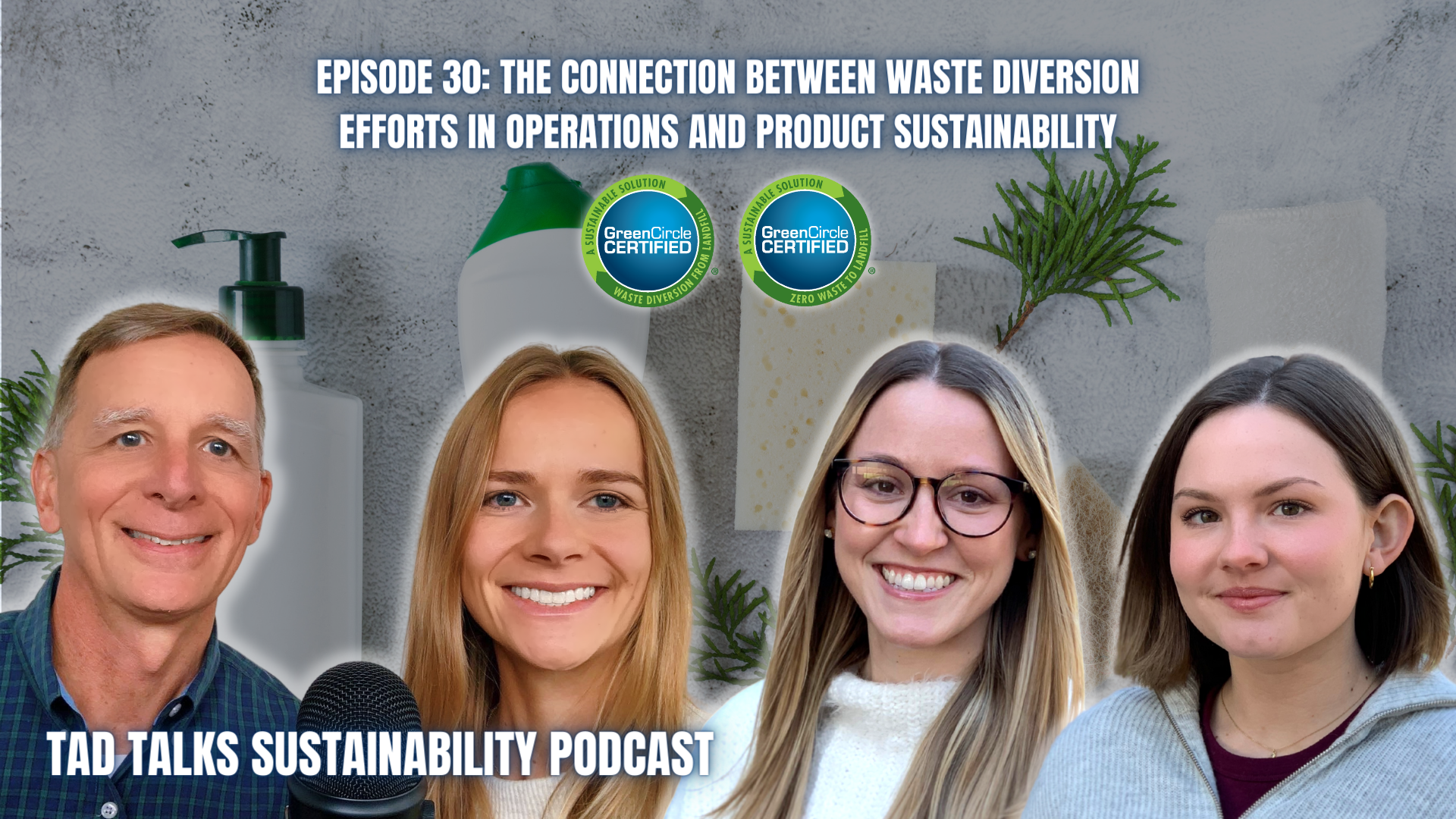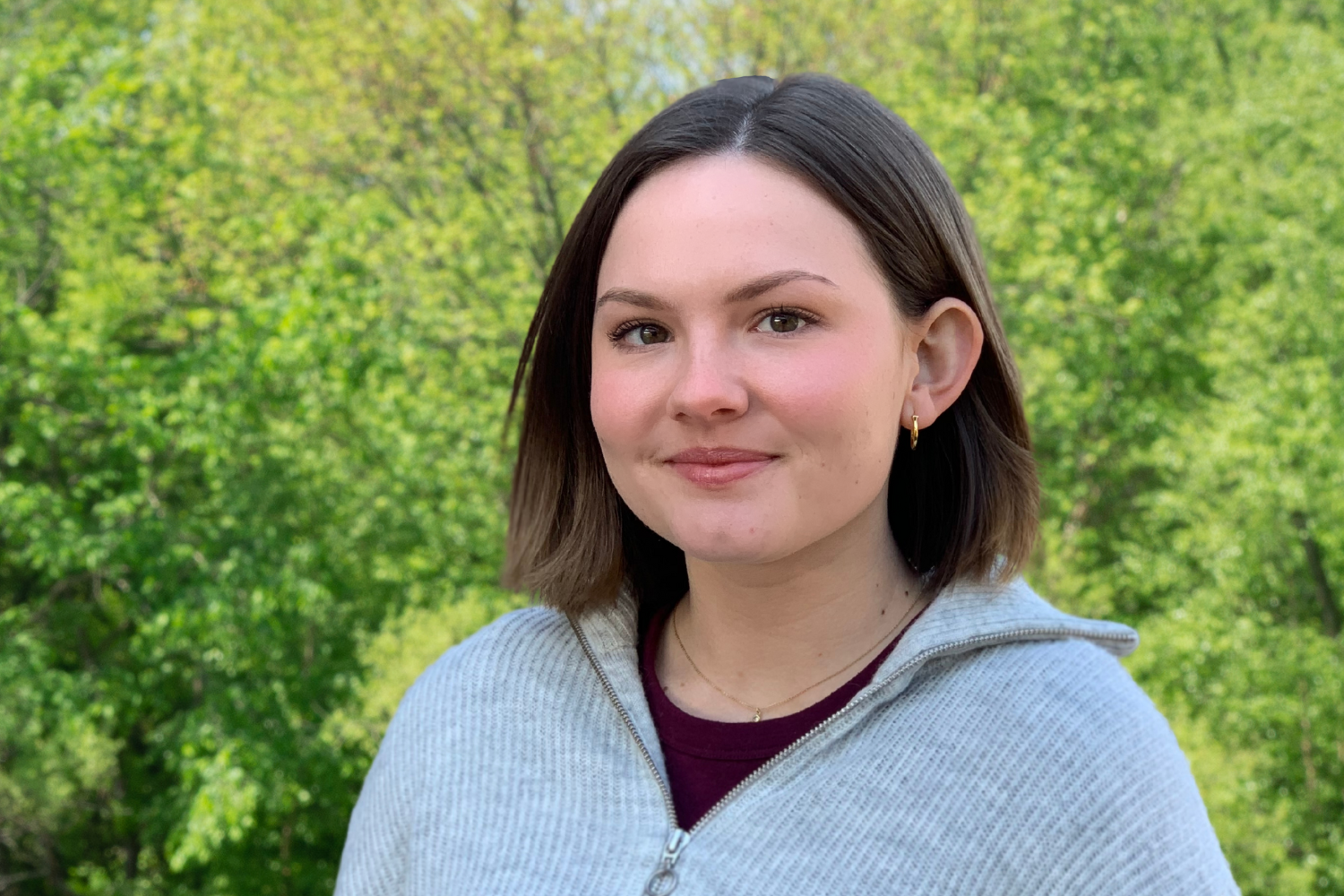Episode 30: The Path to Waste Diversion and Zero Waste to Landfill Certification with Gemma Antoniewicz and Katie Feenan from GreenCircle Certified
Click the links below to listen to the full episode
Waste Diversion from Landfill and Zero Waste to Landfill certifications are becoming more common in the marketplace. In this episode, Tad and Julianna sit down with Gemma Antoniewicz and Katie Feenan from GreenCircle Certified, to discuss the process for certifying Waste Diversion and Zero Waste to Landfill claims, why GreenCircle performs physical site audits as a part of this process, the types of waste they look at when completing these certifications, what the Acceptable Means of Diversion Hierarchy is, why GreenCircle also audits the client’s Material Management Organizations (MMO’s) that haul their waste, what GreenCircle’s Zero Waste to Landfill certification is different from other certifiers, how GreenCircle certifies events for Zero Waste to Landfill, and how waste diversion in operations relates to the sustainability of products. We also answer an audience question at the end of the episode about Life Cycle Assessment (LCA) Optimized certifications.
Interested in submitting a question for Tad to answer on an upcoming episode? Type your question into the box at the bottom of the page!
How do you certify waste diversion from landfill and zero waste to landfill?
“GreenCircle’s Waste Diversion from Landfill certification includes a review of the waste quantities that are generated from a site for a 12-month period. We are collecting quantities from both our client as well as from their downstream material management organizations. So we are trying to determine the most accurate dataset between those two. We are also validating with that downstream organization, how that waste is disposed of and the percentage for each waste stream that is ultimately diverted from a landfill.
GreenCircle’s Zero Waste to Landfill certification is the highest level of achievement for our Waste Diversion of Landfill certification. We follow a proven process that's very rigorous and we want to make sure that all of the waste is being managed in the best way possible. That zero waste to landfill claim can be made by a company that has demonstrated that no waste is being sent directly to landfill. Again, their waste is being managed with one of GreenCircle's acceptable means of diversion. However, we recognize there's imperfections in some of the recovery processes and there also is likely a little bit of inevitable contamination at the plant. So we do allow under our Zero Waste to Landfill certification that there's no more than 2% of the total waste that can consist of those residuals or contamination, residuals from the downstream processes, that end up being sent to a landfill. However, again, I want to reiterate that all of the waste has to be leaving our client's facility with the intention of being recovered. The only situation where landfill is allowable is for those sorts of residuals within a certain percentage.”
GreenCircle has certified a few events for Zero Waste to Landfill. Can you tell us about the process for certifying an event?
“I'll just start off by saying the process for events is very similar to the process for facilities. So everything that we already talked about, having an understanding of all of the different waste types, being able to audit their waste organizations and get feedback from them regarding how the materials are managed and also confirm waste with them. All of that is exactly the same. The real differences are that it's obviously a smaller timeframe than looking at a 12-month period. So again, having that onsite visit, being there while the waste is actually being disposed of is really important. Something else that is really important for events would be understanding how the sorting is done on site.
I've certified events for Zero Waste to Landfill and I've walked around all day and you want to understand how the attendees are understanding the recycling signage and see where the contamination is happening so you can report that back. If there is contamination, it's important to understand how the waste is being sorted before it's picked up for hauling and being able to see if the contamination is able to be sorted out and if it's not going back to those waste organizations. Like Gemma said with the residuals, understanding how that contamination would be handled there. I recently attended the TimberTech Championship in Boca Raton in Florida. I was onsite there documenting all of the different waste streams and seeing the sortation and now I'm working with their waste organizations to understand how the materials were ultimately managed.”
How does waste diversion from landfill in operations relate to the sustainability of products?
“These are definitely inherently tied together. Going back to the waste diversion hierarchy, that top solution would be for source reduction. A product really can't be sustainable if it's also creating all of this waste along with it that has nowhere to go. When you're thinking about waste kind of being retired to the landfill, we want to encourage the material to stay in circulation so that it can be incorporated back into products and kind of keep living its life as the material that it is. It is really critical for a company to think about the fact that the raw materials and everything they bring into their plant, they really want that going out as a product and not in the dumpster to be thrown away because that's not only a lot of money, but it's a lot of valuable materials and impact that could occur. I think that there is a major connection here in terms of minimizing the footprint of the product.
Because even when we do life cycle assessment work, we're looking at those products and if there's a lot of scrap or a lot of waste in the production of the product, you have to count that in the life cycle assessment. So waste reduction, waste minimization, like you talked about recovery and reuse of the materials inside the plant, is going to lower that life cycle impact in the embodied carbon of the product over time. That's definitely how they're connected and that's why this is so important and why so many companies also have big commitments for zero waste to landfill. Knowing that it's important for them not only to manage their break room waste and the things coming out of the cafeteria, but really to make sure all those materials and packaging even, is going out with the product and being sold and not put into disposal or even recycling. A lot of times we've been in plants where they're really proud about their cardboard recycling and then you look and 10% or 20% of the recycling bale is their own boxes that should be going out with the product, so it's great they are recycling them, but it would be a lot better if the product went in the box and went out the door.”
MORE VIDEO CONTENT
ABOUT Gemma Antoniewicz, LEED® Green Associate™
Gemma is a Senior Certification Analyst at GreenCircle Certified. Gemma has been with the company since 2016, and has experience in conducting Certified Environmental Facts Certifications, Certified Sustainability Facts Certifications, Waste Diversion from Landfill Certifications, and Material Ingredient Reporting Verifications. She is a member of the Health Product Declaration Collaborative’s Third-Party Programs Technical Subgroup.
Gemma graduated cum laude from the University of Delaware with a Bachelor of Science in Environmental Science with a concentration in hydrology.
About Katie Feenan, LEED® Green Associate™
Katie is a Certification Analyst at GreenCircle. She has experience working on a variety of product and facility certifications including Life Cycle Assessment Optimized, Recycled Content, Waste Diversion from Landfill, and Certified Environmental Facts. Katie graduated from Villanova University with a Bachelor of Arts degree in Environmental Studies and minors in Sustainability Studies and Communications.
WE’RE ANSWERING QUESTIONS FROM OUR AUDIENCE!
Anonymously ask Tad a question about sustainability by typing your question in the box below.
We will answer your questions on an upcoming episode.








